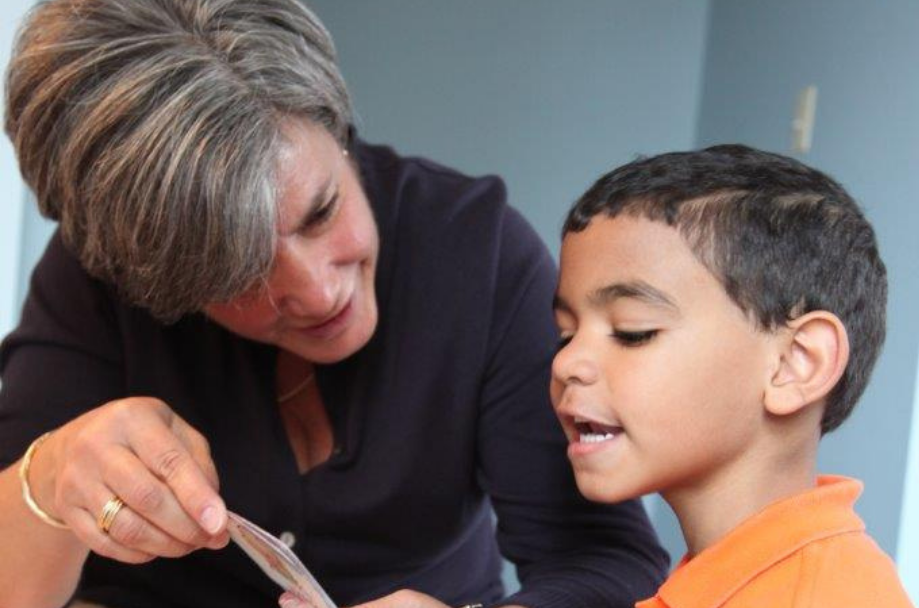Get down to your child’s level. Sit in a way that you can be face to face with your child. This may mean getting on the floor or finding a spot on the couch to play. This helps him/her to see your face, how you make sounds, and communicate using your facial expressions.
Observe what your child is interested in and interpret what he/she may see or think (e.g., If he reaches or looks up to a plane flying in the sky, you could say “You see an airplane”. If he/she makes faces during diaper changes, you might say “You look happy/sad/frustrated” or “You smell stinky”).
Imitate his/her sounds and actions–imitation is a great way to start learning turn taking and serve and return, an important part of building your child’s language.
Talk about what you are doing (self talk): “I’m peeling the potatoes”, “I’m reaching way up high”, “I’m putting your train up on the table”.
Talk about what your child is doing (parallel talk): “You are building a tall tower”, “You are pushing the swing”, “You are drinking orange juice.”
Model, Model, Model: Name things in your child’s environment. Talk about objects-what they are and what they do. Talk about actions such as running, jumping, moving, spying, washing. Use words to describe such as big/little, tall/short, sticky, funny, delicious. Use your child’s favorite stuffed animal to demonstrate and talk about in, on, under.
Expand: If your child says “car”, consider adding another word such as “big car”, “blue car”, “fast car”. If your child uses two of three words, add one more “e.g. if he/she says “car go” you can add “car goes fast–vroom”.
Reduce questions: Bombarding a child who is struggling with language with questions may overwhelm him/her and is not a teaching strategy. Use “I wonder” instead or use the strategies above (parallel talk, self talk). As the child matures, open ended questions is a great way to promote learning but if a child cannot answer questions yet, try building their language by modeling, talking about what you and your child are doing, and limit questions to a 3:1 ration (3 comments to 1 question).
Read to your child every day. Reading books is a good way to expose your child to vocabulary that may not occur in everyday life. For tips about how to read to your child check out Raising Readers.
Sing. Your child will not care whether you can carry a tune or not. Singing, particularly songs that have motor movements, will help your child build imitation skills. The more motor movements he/she imitates with his hands (e.g., The Itsy Bitsy Spider, Wheels on the Bus), the more likely it will be that he/she learns how to imitate oral motor skills for the development of speech.
For more information about strategies you can use with your child based on their age click here.
